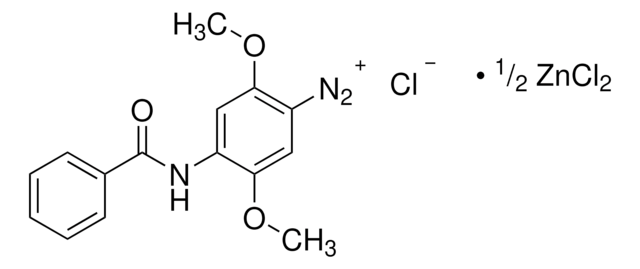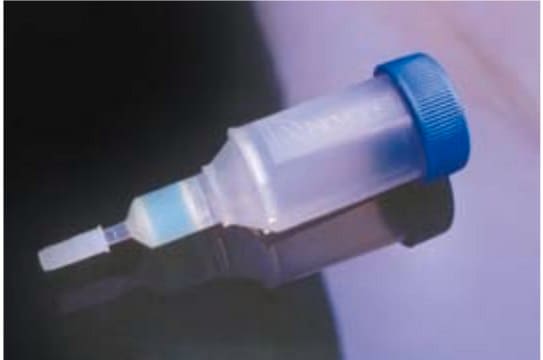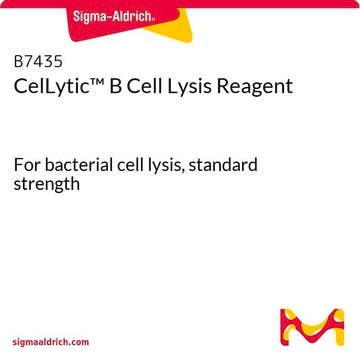H8162
HIS-Select® Cobalt Affinity Gel
(1:1 suspension in a 30% ethanol solution)
Sinónimos:
cobalt affinity gel, cobalt charged agarose
Seleccione un Tamaño
US$ 192,00
Seleccione un Tamaño
About This Item
US$ 192,00
Productos recomendados
Formulario
(1:1 suspension in a 30% ethanol solution)
caducidad
1 yr (when stored properly.)
técnicas
protein purification: suitable
Matriz
6% Beaded Agarose
capacidad
>15 mg/mL, agarose binding capacity (protein)(with an approx. 30 kDa protein)
temp. de almacenamiento
2-8°C
Descripción general
HIS-Select Cobalt Affinity Gel is an immobilized metal-ion affinity chromatography (IMAC) product. The matrix for this affinity gel is 6% beaded agarose. The selectivity can be modulated with the inclusion of imidazole during chromatography. HIS-Select Cobalt Affinity Gel is durable and can capture recombinant proteins with histidine tags at a high flow rate. Recombinant proteins with His tags are bound using native, denaturing, or mild reducing conditions. The capacity of this affinity gel is typically >15 mg/mL of packed gel, determined with a His-tagged protein of molecular mass ~30 kDa.
Aplicación
Forma física
Información legal
Palabra de señalización
Danger
Frases de peligro
Consejos de prudencia
Clasificaciones de peligro
Aquatic Acute 1 - Aquatic Chronic 1 - Carc. 1B - Eye Irrit. 2 - Flam. Liq. 3 - Muta. 2 - Repr. 1B - Resp. Sens. 1 - Skin Sens. 1
Clase de riesgo para el agua (WGK)
WGK 3
Equipo de protección personal
Eyeshields, Faceshields, Gloves, type ABEK (EN14387) respirator filter
Elija entre una de las versiones más recientes:
Certificados de análisis (COA)
¿No ve la versión correcta?
Si necesita una versión concreta, puede buscar un certificado específico por el número de lote.
¿Ya tiene este producto?
Encuentre la documentación para los productos que ha comprado recientemente en la Biblioteca de documentos.
Los clientes también vieron
Contenido relacionado
Investigue las interacciones proteína-proteína in vitro con análisis pull-down, utilizando métodos de afinidad, pull-down con GST, TAP y co-inmunoprecipitación.
Investigate in vitro protein-protein interactions with pull-down assays, utilizing affinity, GST pull-down, TAP, and co-immunoprecipitation methods.
Active Filters
Nuestro equipo de científicos tiene experiencia en todas las áreas de investigación: Ciencias de la vida, Ciencia de los materiales, Síntesis química, Cromatografía, Analítica y muchas otras.
Póngase en contacto con el Servicio técnico














